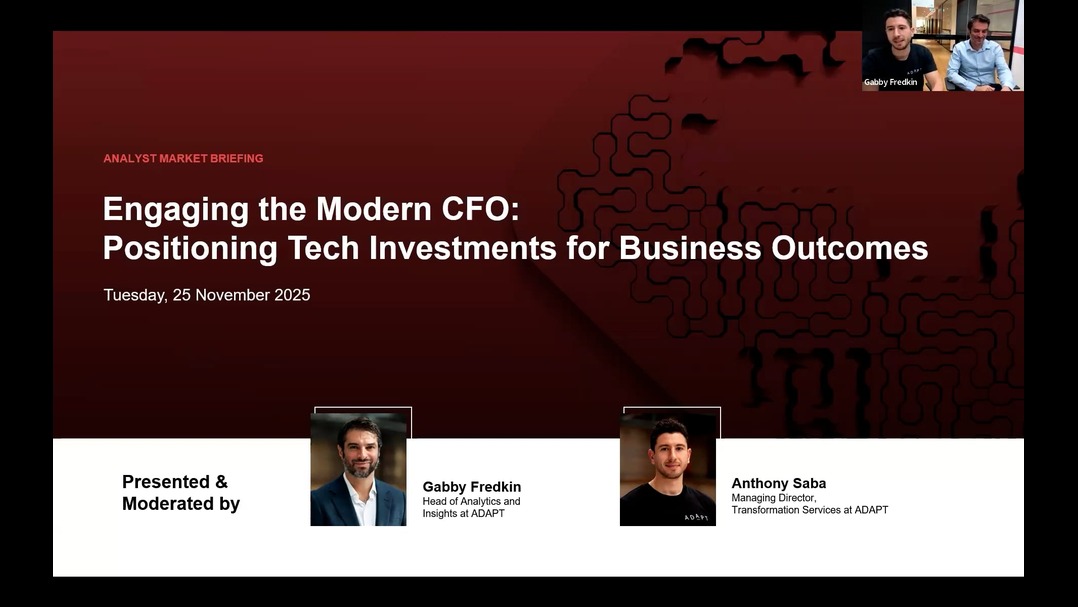CIOs Need to be the Catalyst for Australia’s Future Success
Australia has all the right resources, skill-sets, and collective knowledge to still work towards strong economic growth in the coming years if it focusses its efforts on digital technologies to tackle environmental, social and economic challenges.
We have the vision and some of the key ingredients such as the conceptual roadmaps to transform, coupled with the right technologies and the appetite to use them. We need to do a better job of enabling our people to execute on that vision at both the tactical and strategic level through improved communication, mindset shifts, empowerment and training.
By 2020, Australia’s GDP is expected to reach US$ 1.7 trillion, growing by 2.75% over the comparative GDP figures for 2019 GDP.
Around 70% of Australia’s GDP comes from the services sector, which employs 80% of the Australian workforce.
In a landmark study, over 150 chief information officers from some of Australia’s largest organisations have revealed the biggest business obstacles impeding the delivery of IT initiatives, and the real reasons behind their endless hiring conundrum, priorities and challenges.
Technology priorities must begin with strategic priorities
Every technology conversation must be tied with a business outcome.”
Technology adoption based on singular technology capabilities has often failed to gain anticipated business benefits. This is because technology conversations happen in isolation of business conversations. Therefore, we need to communicate and align the key business stakeholders to the same priorities. So, what are the CIOs’ priorities?
Australian CIO business priorities
Challenging economic conditions are driving increasing uncertainty and ambiguity.
In times of uncertainty, organisations need to look more deeply at the fundamentals of the business.
Surveyed Australian CIOs attending ADAPT’s CIO Edge conference said that IT investments and initiatives that drive operational effectiveness, build a data-driven organisation, and acquire and retain customers are key priorities.
While reducing costs and attracting & retaining customers were listed separately, CIOs need to remember that they are not mutually exclusive.
CIOs need to look across business priorities and consider where the synergies lie in order to gain benefit from one to the other.
The below chart illustrates the ten most significant core priorities for Australian CIOs in the next 12 months.
CIOs need to think much more deeply about the strategic opportunities that IT can generate to help future-proof the business through new approaches, mindsets, technologies, tools and processes.
As part of this thinking CIOs are considering how many of today’s emerging technologies can help them achieve their key business priorities.
Fostering a unified view of your own business can be the first step in helping to facilitate this more strategic thinking whilst driving the core efficiency gains for the business.
Attracting and retaining staff (and customers)
CIOs cannot achieve their key priority of attracting and retaining customers through improved CX without having the right skills and capabilities amongst their employees.”
Australia’s leaders are struggling to attract, develop and retain the skills and capabilities they need to consistently execute on their business, organisational and digital strategies.
Yet shockingly, talent acquisition and retention does not make the cut for top priorities. CIOs need to understand that the biggest investment for services businesses today is talent and employee experience.
This might seem like a gamble given the attrition rates across new technology domains, but if each organisation focusses on employee experience and talent development, the industry will be more competitively enabled.
The diagram below lists the top five challenges, CIOs cite when it comes to attracting and retaining talent. 2,3 and 4 starkly illustrate the importance of and the need to communicate more effectively. While one demonstrates the need to develop internally to improve the capabilities of our existing workforces.

Australian CIO barriers to success
Internal conflict, legacy, budgets, inability to transform and unclear ROI are the five reasons CIOs’ IT initiatives fail or get dismissed.”
For 74% of the CIO respondents, conflicting business priorities are the top impediment to the successful delivery of IT initiatives. This shows a fundamental breakdown of communications and lack of a unified approach to the business strategy.
This 74% is fed directly by the third barrier with 56% of CIOs struggling with interdepartmental communication and collaboration. With every business now transforming themselves into technology businesses that are delivering their specific services, there is a need for the elevation and understanding of technology at the board level. The CIO needs to have a seat at the board table and the appropriate reporting lines into CEOs.
This push should come from the CIO where they improve their ability to contextualise technology solutions in terms of business outcomes needed.
This should start with a combination of improved interdepartmental communications and a change in legacy mindsets and processes.
The legacy challenges (technologies, mindsets, processes) across all functions, levels and businesses continue to stand out as the CIOs’ leading business barrier. Today’s investment can become tomorrow’s legacy if we do not continuously monitor and upgrade operations, technology and thinking.
Conflicting views on what constitutes legacy and the associated investment disconnects create conflicting IT investment priorities which then becomes the CIOs’ responsibility to take care of and integrate.
Businesses are not thinking holistically with one view and focus, and do not have adequate understanding of the CIOs’ technology decisions, creating further delays and confusion in technology deployment. We continue to support and promote one technology over another.
Make it about the “What’s in it for business and stakeholder?” rather than “What’s in it for IT?”
IT has the tool-sets to improve Inter-departmental communication and foster a more fluid and cohesive view of the organisation. Paying more attention to IT integration, where it makes sense, can provide the means and ability to break down some of these inter-departmental disconnects.
Australian CIO Stakeholder engagement
Silos will disappear gradually if CIOs relook at the way they align people, processes, technology, with business objectives.”
When we consider the core principle of this need to tear down silos, a key unifying area of focus across many parts of the business is how we can acquire and retain customers.
At the same time, CIOs told us that marketing and sales collaboration is low, with generally low perceptions of IT, representing a stark dichotomy as you cannot achieve one without the buy-in of the other.
CIO stakeholders do not link IT with their desire to work effectively. They do not believe that IT is significantly contributing (positively) to the success of their work and their initiatives.”
The chart shows how well different departments understand the role of IT and the CIO in business.
Core departments, such as HR, Customer Service, and Marketing all have a 40%+ low perception across their departments, with Sales having a 61% low perception.
Showing that stakeholder collaboration and management with the parts of the organisation that drive revenue, profit, awareness, and strategy are very low.
With the rise of these departments taking ownership of their own technology decisions (more often than not, non-official control), there is even more need for close inter-departmental collaboration in order to align business priorities and reduce risk for the business.
CIOs need to look for IT alignment opportunities to demonstrate that CIOs and their team can bring value to the parts of the organisation that generate, own and ultimately influence their ongoing budgets and initiatives.
As illustrated below most CIOs told us that their own IT teams have the biggest impact on IT initiatives, this risks an internally focused mindset. ADAPT believes there needs to be a rethink here and a broader focus on the business-critical stakeholders such as marketing and sales.
In the quest to attract and retain customers, the focus for the business is increasingly CX, there is little chance of success without IT, sales and marketing working closely together with those stakeholders.
CIOs need to collaborate to demonstrate how IT can help sales and marketing align more effectively to the customer and business journeys.”
CIOs report their lowest level of collaboration is with their sales peers. Yet they also identify acquiring & retaining customers as their third biggest business priority.
This highlights a need for CIOs to get outside their operational efficiency comfort zone and look for ways to bolster these engagements between their business and its customers.
Think like a technology company, not a captive customer
Mould the technology to solve the business problem, rather than letting technology dictate the business problem.
There is no greater need than now for Australian organisations to start breaking the mould of traditional business ideas, approaches, and strategies.
Today’s products and services will not be relevant tomorrow, thinking like technology companies with an outcome/experience first mindset is essential.
Many traditional bricks-and-mortar companies have been far too slow in Australia to address the threat of online local and global multinationals.
Having a ‘technology-as-an-enabler’ mindset should not imply aimless investments in modern technologies. Instead, it implies that businesses develop an orientation towards technology as a solution, enabler, and a differentiator in solving problems and driving change.
Australian business leaders must foster and embrace different mindsets and cultures that recognise how technology and ‘technology first’ mindsets can become the enabling solution to every problem rather than a hindrance as it is often perceived today.
Just as CIOs need to think like technology companies; so too do their technology partners. There is no room for the “I am an XYZ shop” mindset and there is no room for tech vendors to expect loyalty for loyalty’s sake.
Australian CIOs need to seek out partners with a “born in the cloud” mindset and culture that have not grown out of legacy technologies, mindsets and processes.

























